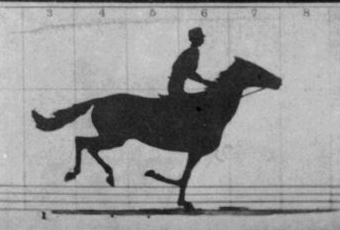Ever since The horse in motion came out , the entertainment norms are blessed with the most wonderful and magnificent inventions ever , the Motion Picture . Eadweard Muybridge a renowned English photographer, was one of the first who invented moving imagery. The concept of persistence of vision came into light , it indicated that the retina sustains the images reaching it for a fraction of seconds beyond their disappearance from the field of sight, moving different morphing images with a high frame rate gives the amazing opportunity of perceiving an image in motion , hence the process of conceiving movies came into motion.
The smart technique of shooting and displaying images at a frame of 16 perforations per second came into life in the late 1800s and that technique evolved in mid 1900s to a frame rate of 24 perforations per second but we’ll come to that later. At the very birth stage of movies , it was nothing but about 5-8 mins frames of a particular action and were one reel long without a story like ,men playing cards , a train arriving at a station, a man watering his garden and a street vendor selling his wares, most of them were displayed by Lumiere Brothers. At that time these slow run time movies with very low quality hit the reality quotient , a funny incident of the famous movie ‘a train arriving at a station’ was playing in a theater and it was so real for the audience then that they perceived as if the train will itself arrive in the theater and every one panicked and ran for their life . This melancholy of an incident indicated the impact of movies to our lives.
This celluloid of movies without screenplay evolved into a celluloid with a plot , early approaches of the concept was ‘The Great Train Robbery’ which was also a one reeler , some tried to make movies into two reels . But then came Birth Of the Nation The very first successful full lenght feature film with run-time of about three hours. The movie industry at that time never disclosed the name of the actors in a fear that the actors will start asking for a raise , and then came Charlie Chaplin.
The Aspect ratio
First things first aspect ratio is simply the ratio b/w the length and the height of an image. From 4:3 and 2:35:1 to 16:9 cinema has been produced in all. It began from 4:3 ratio in 1909 when films were shot on 35mm celluloid and the images were 4 perforation in size ,which was later on standardized . Post some years after the innovation movies were without any dialogues or soundtrack but it soon evolved into something known at that time as ‘talkies’, in which the soundtrack was imprinted on the film reel itself as a magnetic strip flowing side by side the film to ensure calibration and synchronization between the audio and video.
4:3 went on for about 3-4 decades and then came widescreen, films had a tough competition when TVs came out and faced a huge loss , to counter it a new format was introduced in which three camera shot a footage from three different angles and the image usually 6 perforations high was projected on a large screen by three projectors projecting images on a single screen from the same angles as that of the lenses.This technique transformed into cinemascope, in which it was possible to store and image of 2:35:1 on a 35mm film without compromising its aspect ratio , this widescreen was replaced by 70mm film few years later
The 35mm turned sideways and gave birth to 1:85:1 aspect ratio whose images were 8 perforations wide . After all the those ratio expansion finally and norm came into motion inspired from the TV sets which could accommodate both 4:3 and 2:35:1 into it’s 16:9 aspect ratio screen, which eventually gave birth to the obsessive benchmark ‘High Definition’ and IMAX.
The Soundtrack
Sound tracks had a great contribution in the motion picture evolution .Movies in the past faced difficulty in synchronizing and amplifying sounds in vast auditoriums .The first leap to implement audio with video occurred in 1923 with features known as talking pictures of ‘talkies’ which had dialogues incorporated with the film . The audio track was imprinted along the frames to ensure synchronization. Another approach to implement sound track was made by bringing phonographic disks into limelight.In that late era a phonograph turntable was connected by a mechanical locking system to an upgraded film projector, enabling synchronized soundtrack and clarity.
These norms were followed for a long time and then came Dolby
Cinematographic techniques
Films that changed the face of cinema
See our list for the revolutionary movies that happened Right here





